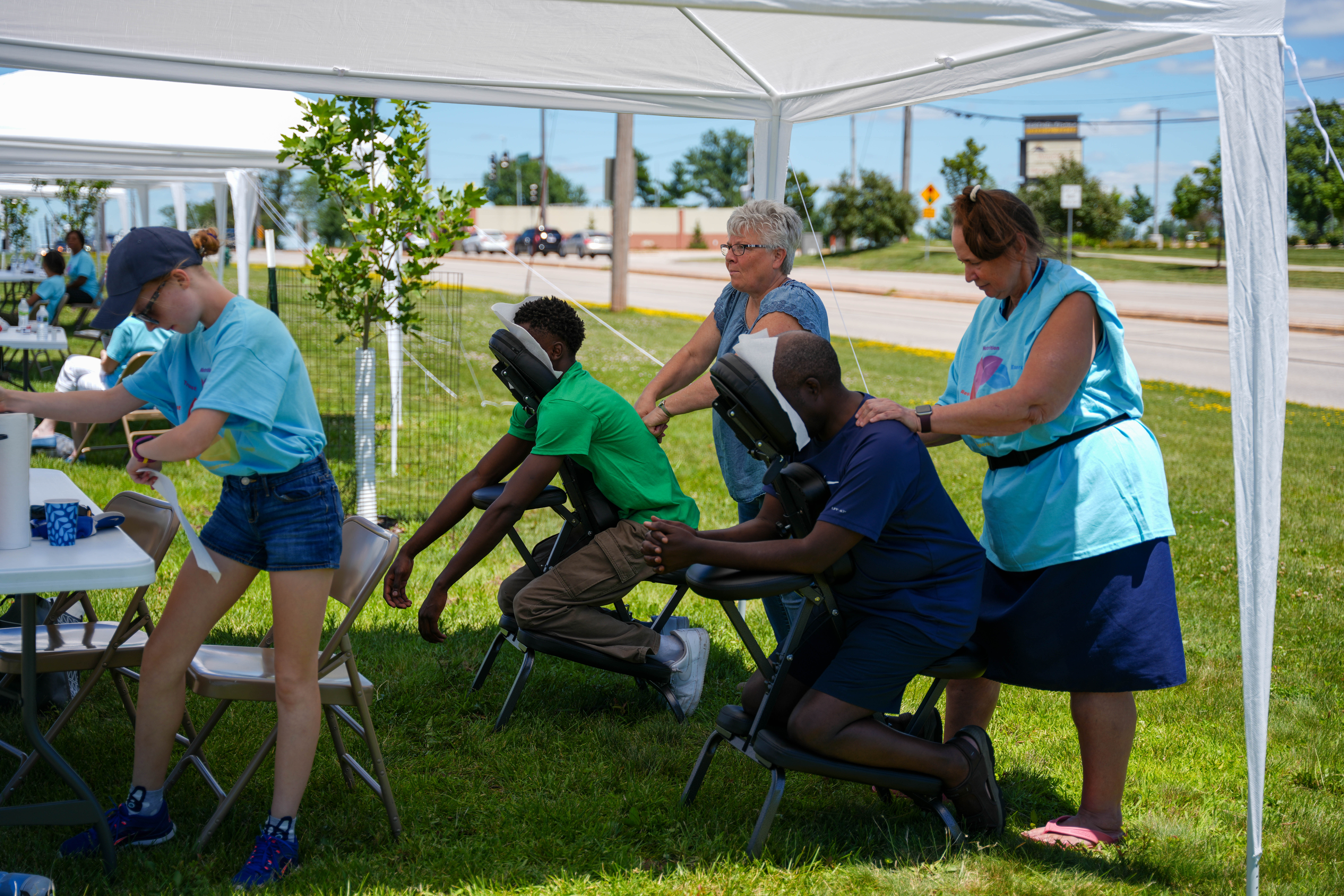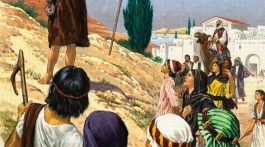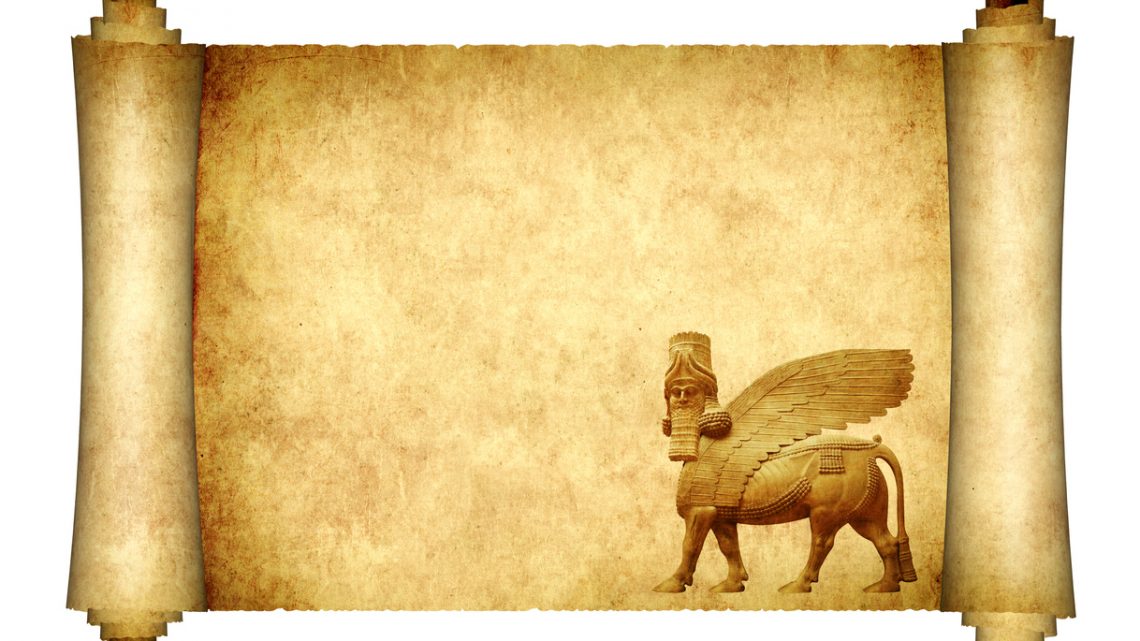Sabbath School Lesson for March 16-22, 2019
Overview
Revelation introduces us to both sides of the church, portrayed symbolically as a woman. But, chapters 17 and 18 focus mainly on the apostate church, the one who is called Babylon, that great city, a harlot, and the woman in purple and scarlet who rides on a beast.
- Why is she considered a harlot? (Sunday)
- What are her characteristics? (Monday)
- Who is the scarlet beast she rides on? (Tuesday)
- What are the seven heads on the beast? represent (Wednesday)
- What is Babylon’s fate? (Thursday)
Introduction
Three worldwide movements unfold in the last days. They are apparently:
- apostate religious institutions who unite to oppose God and enforce the worship of Satan (Revelation 13:8–“All who dwell on the earth will worship him…”)
- political governments who join forces briefly with the religious establishment to crush God’s followers (Revelation 13:16–“He causes all, both small and great, rich and poor, free and slave, to receive a mark on their right hand or…”)
- the remnant who faithfully proclaim Christ’s judgment and extend the gospel invitation to a global audience (Matthew 24:14–“And this gospel of the kingdom will be preached in all the world…”)
Each of these powerful world entities are described in various ways in vision to the prophet John, using different images and symbols.
We are more likely to interpret these prophecies correctly when we understand the difference between a vision and the explanation that may later be given to the prophet.
- The vision…
- A prophecy may contain elements from any time or place, which may confuse and alarm the prophet (or even us).
- The interpretation…
- An explanation from an angel often later provides some context to the vision–by allowing the prophet to understand only that portion of the vision pertaining to his location, or events that begin during his lifetime.
Memory Text: “And I heard another voice from heaven saying, ‘Come out of her, my people, lest you share in her sins, and lest you receive of her plagues. For her sins have reached to heaven, and God has remembered her iniquities.’ “ Revelation 18:4, 5 NKJV
How could God be more loving and just than this? We see here both His mercy and justice, combined in a passionate invitation.
- Mercy–On the one hand, He extends the invitation to leave Satan’s camp to every believing heart.
- Justice–But then, He assures these honest-at-heart souls that the sins that have been committed by Satan and his followers will be remembered and those who still oppose God will receive the justice they deserve.
Sunday: The Harlot Babylon
In Revelation 12 and later in chapter 22, we see a picture of a pure woman, a bride–symbols of God’s true church, His faithful ones.
In between those pages, however, another woman is portrayed. She is described as a harlot, and identified with Babylon, a powerful city that was seeped in paganism and idolatry. This highly-adorned woman is commonly understood to represent false, apostate religions (Isaiah 1:21).
An angel began to explain to John the meaning of the judgment of the harlot Babylon. He revealed that there are two groups who are seduced by her. They are drunkenly drawn into an adulterous relationship with her in the end times (Isaiah 28:7).
“with whom the kings of the earth, committed fornication, and the inhabitants of the earth were made drunk with the wine of her fornication.” Revelation 17:2 NKJV
- “the kings of the earth”–the governing political leaders
- “the inhabitants of the earth”–the governed masses
As it says in Isaiah 28:7, “They are swallowed up with wine, they are out of the way through intoxicating drink; they err in vision, they stumble in judgment.” NKJV
Eventually this drunkenness leads to the union of church and state (making it an image of the medieval church), in order to promote worship of Satan.
This harlot is found sitting on “many waters”. And these waters were explained by the angel as being “people, multitudes, nations, and tongues” (Revelation 17:15).
We can, therefore, understand more clearly the sixth plague, which consisted of the drying up of the Euphrates River. The governments and the people who supported Babylon appear to remove their support, causing the devil to ramp up his deceptions to win them back. See Revelation 16:14.
Discussion Questions:
Read Revelation 17:1, 15, 12 and Jeremiah 51:11-13. What did the “many waters” stand for, and what might have happened in the sixth plague then, when the Euphrates was dried up?
Read Revelation 17:2. Who are the “kings of the earth” and who are the “inhabitants of the earth”?
Read Revelation 14:8, Isaiah 28:7, and 21:9. What causes Babylon’s fall?
Monday: The Harlot Riding on the Scarlet Beast
The harlot, as already seen in many passages of the Old and New Testaments, is a church that has apostatized and no longer teaches or practices the full gospel truth. Revelation 17:3 pictures this false, religious organization seated on a scarlet beast. The beast, in this case, indicates that the harlot is united with civil, political powers (as was the case with the sea beast in Revelation 13), in order to accomplish her goal of persecuting the saints.
As we visualize this harlot woman, the apostate church, riding the beast, we recognize the dominance she must have over the governments of the world. Just as a rider of any kind of animal has dominance over the creature.
Verses 4 and 5 of Revelation 17 provide us with a vivid description of the harlot’s appearance. She is…
- “arrayed with purple and scarlet”
- “adorned with gold and precious stones and pearls”
- “having in her hand a golden cup”
- with the name of “Mystery, Babylon the Great, the Mother of Harlots” on her forehead

Each of these features is a counterfeit of the high priest’s attire, as found in God’s earthly sanctuary, and later the temple. See Exodus 28:5, 6, 36-38 and Daniel 5:2-4.
The drunken condition of this harlot is alarmingly revealed in Revelation 17:6. The wine is defined there as the “blood of the saints…the blood of the martyrs of Jesus”–emphasizing the violent, persecuting nature of this “Mother of Harlots” (v. 5).
Discussion Questions:
Read Revelation 17:3 and 12:14. Although the “wilderness” sounds like a harsh, desolate place, why is it often seen in the Bible as a place of refuge and closeness to God? Give examples.
Read Revelation 17 4, 5, Exodus 28:5, 6, and Revelation 4:2, 3. How are the precious stones of the harlot a counterfeit of God’s glory? Why are we cautioned about too many worldly adornments (1 Timothy 2:9, 10)?
Read Revelation 17:6 and Isaiah 57:15. What is special about God’s name? What does the harlot’s name tell us about her?
Tuesday: The Identification of the Scarlet Beast
The scarlet beast the harlot rides (Revelation 17:3) sounds very similar to the sea beast of Revelation 13. This was the beast who spoke blasphemies and made war with God’s saints (ch. 13, v. 5-7), causing them to flee to the wilderness for 1,260 days or prophetic years.
The angel went on to explain to John that the beast “was, and is not, and yet is” (Revelation 17:8). This unusual identification might be seen to match the three phases of the sea beast’s power. Revelation 13:3 tells us, “And I saw one of his heads as if it had been mortally wounded, and his deadly wound was healed. And all the world marveled and followed the beast.”
These three phases of the beast (which at times used secular rulers to enforce its worship) are…
- the prophetic period of 42 months, or 1,260 days/years (from 538-1798 A.D.)–or the time when it “was”
- the time when its deadly wound caused it to vanish for a time (from 1798 A.D.-?)–or the time when it “is not”
- after the wound is healed and it regains its full power (in the last days)–or the time when it “yet is”
Keep in mind the counterfeit nature of this beast we’re talking about. God has also been called the One “who is and who was and who is to come” (Revelation 1:4).
Discussion Questions:
Read Revelation 17:3 and 13:5-7. What are the similarities of the sea beast (ch. 13) and the scarlet beast (ch. 17)?
Read Revelation 17:8 and 13:5, 3, and 8. How is this further evidence for identifying the beast? How does the Catholic church fit the phases of this description?
Read Revelation 1:4 and Exodus 3:14. What does the name “I AM” tell us about God’s nature? Why would Satan try to counterfeit it?
Wednesday: The Seven Heads of the Beast
As the angel further informs John about the meaning of the scarlet woman and the beast, we come to a passage that baffles us, in Revelation 17:9-11. Here it talks about the seven heads of the beast, which are said to be seven mountains. Mountains typically represent world powers or empires. But which world empires might this prophecy be talking about?
Bible scholars, even Adventist ones, have had different interpretations, and most of them are plausible enough. Some of them go way back into antiquity, and others point to future world empires that will rapidly develop.
But when we try to understand what explanation would work best for the apostle John, who was receiving the explanation from an angel, we might want to consider this interpretation:
In looking at verse 10 of chapter 17, we find…
- The five who “have fallen” would be Egypt, Assyria, Babylon, Medo-Persia, and Greece (all before John’s time).
- The sixth one who “is” would be the Roman Empire of John’s day.
- The seventh one “not yet come” would be the Roman papacy, as it developed and thrived during the Middle Ages.
Verse 11 tells us about an eighth one, which points to the seventh one, who had received a deadly wound (in other words, the papacy), and later revived and came back on the world scene in the last days. This seems to be the most logical explanation, when you see it from John’s perspective.
Discussion Questions:
Read Revelation 17:1, 15, 3, and 9. What is represented by the things the harlot sits on? The waters [the masses]? The scarlet beast [the apostate church]? And now the mountains [world empires]? How does she use them?
Read Revelation 17:10. Why are the empires of Egypt, Assyria, Babylon, Medo-Persia, Greece, Rome, and the papal Rome most likely the “mountains” spoken of in this verse? How do they fit the five who are fallen, the one who is, and the one not yet come–all seven?
Revelation 17:11 and 13:3. How and when does this eighth power appear? In what ways has its deadly wound been healed in the last days we are living in?
Thursday: The Judgment of Babylon
Remembering that the beast had seven heads and ten horns makes us wonder who the ten horns might be. Symbolically, it is generally understood that they indicate kings or kingdoms, but which ones?
The most logical explanation is found in the ten toes of King Nebuchadnezzar’s image that he saw in a dream (Daniel 2:41-43). These turned out to be the ten tribes who broke up the Roman Empire, forming the various European countries we still have today.
It’s quite possible that these nations will attempt to unite in the last days and that Satan will use them in his plan to have victory over Jesus in the battle of Armageddon. See Revelation 16:14-16. God’s judgment over Babylon will be swift and sure. They basically self-destruct, suffering a loss that lasts forever.
Discussion Questions:
Read Revelation 17:12-14. What is the purpose of these ten kings coming together, being “of one mind”?
Read Revelation 16:14-16. Why are these ten kings most likely the same “kings of the earth” that Satan and his demons go out to deceive just prior to Jesus’ Second Coming? What will be used to deceive them?
Read Revelation 17:16-18 and 3:4, 5. What causes the nakedness that is mentioned both in verse 16 and in Revelation 16:15?
And, finally…
Christ spoke to the seven churches in the first part of Revelation, and we hear Him again in the closing chapter. But the only words He spoke in this middle section of Revelation really provide us with the whole purpose of John’s recording of his visions on Patmos. He tells us in Revelation 16:15…
“Behold, I am coming as a thief. Blessed is he who watches, and keeps his garments, lest he walk naked and they see his shame.” NKJV
This is another “Blessed…” we might add to the list of blessings Jesus taught His disciples in His famous Sermon on the Mount Beatitudes…especially for us, who are living in the final days before His Second Coming!
We don’t have to walk naked, without Christ’s robe of righteousness, like the harlot. We don’t have to share in Babylon’s judgment. Psalm 91:15 transforms this blessing into a promise:
“He shall call upon Me, and I will answer him; I will be with him in trouble; I will deliver him and honor him.” NKJV
Here’s the link for Ed Dickerson’s latest blog for his series Teaching a Bible Class
Next Week’s Lesson: “I Make All Things New”
To read the Sabbath School Lesson Quarterly or see more resources for its study, go to https://www.absg.adventist.org/
Other Outlook blogposts by Teresa Thompson, are at http://outlookmag.org/author/teresathompson/










